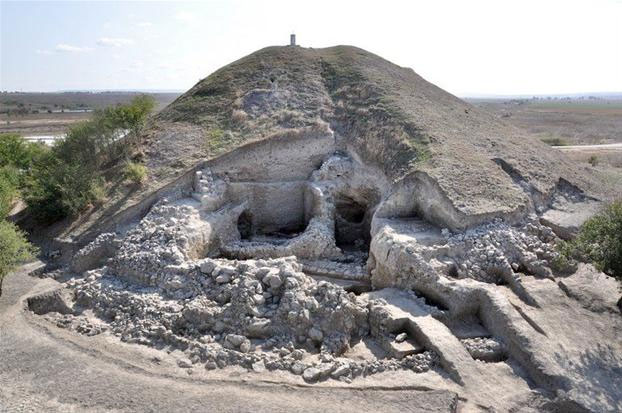Discover the oldest prehistoric town in Europe
Bulgarian archaeologists say they have discovered the oldest prehistoric town ever seen in Europe.
A solid walled structure near the town of Provadia, southeastern Bulgaria today is believed to be an important salt production center. This discovery in northeastern Bulgaria could explain the huge gold store found nearly 40 years ago.
Archaeologists believe that the town has about 350 inhabitants and dates from 4700 to 4200 BC, about 1,500 years before the beginning of the ancient Greek civilization.
People then knew how to boil water in a stream in the area and use it to make salt pellets, sold and used to preserve meat. Salt was very popular at the time, and experts argued that this could also explain the existence of huge protective stone walls surrounding the town.

The prehistoric town in Provadia has two-storey houses and surrounding security walls.
Site excavation began in 2005 and archaeologists also discovered the remains of two-storey houses, a series of pits used for rituals, as well as portions of the same gate architecture. fortress.
A small graveyard, burial of dead people, was also found earlier this year and archaeologists are still studying.
'We are not talking about a town like ancient Greek, Rome or medieval settlements, but about what constitutes a town in the fifth millennium BC. This is what archaeologists agree on , "said Vasil Nikolov, a researcher at the Bulgarian National Archaeological Institute.
Archaeologist Krum Bachvarov, also of the Bulgarian National Archaeological Institute, said the new discovery was "particularly interesting" . 'Great walls around the area, built very high, with some of them are stones. This is something never seen while excavating prehistoric areas in southeastern Europe , "he said.
Similar salt mines near Tuzla in Bosnia and Turda in Romania also helped prove the existence of a range of civilizations that also exploited copper and gold in the Carpathia and Balkan mountains in the same period.
Reference: BBC
- Discover the oldest well in Europe
- Discover the oldest civilization in Europe
- Find the oldest stone ax in the world
- Discover the oldest traces of modern Europeans
- Discovered a 6,600 year old gold pendant
- Discover the world's oldest animal sperm in Antarctica
- Detection of prehistoric lizard fossils
- Discover new evidence of the oldest stone tool chronology in Turkey
- Discover the oldest DNA man in North America
- Decipher the most terrifying cursed land in Europe
- The oldest eel in the world died
- Strange towns in the world
 Discovered an ancient centipede fossil 99 million years old
Discovered an ancient centipede fossil 99 million years old Discovered bat-like dinosaurs in China
Discovered bat-like dinosaurs in China Discovered a 200-year-old bronze cannon of the coast
Discovered a 200-year-old bronze cannon of the coast Discover 305 million-year-old spider fossils
Discover 305 million-year-old spider fossils